|
Every year I ponder why we put such great importance on December 31st—why we celebrate the close of one year and herald in the new year with such fanfare. I never have really been one to make such a ‘to do’ about celebrating New Year’s. Isn’t it simply another day on the calendar, the turning over of a number? One day rides into the next on the 31st of December no differently than all the other days of the year. But we have made it a big holiday – a day to reminisce over the past 12 months and to celebrate the beginning of a fresh new calendar year – and we believe in all of its possibilities. Many of us recommit to our mission in life or to a specific goal. With the encouragement of others, we resolve to some greater aspirations and get all fired up about them! In our Christian walk, it is essential that we take stock of where we are and what we have done, as well as how we can make improvements, grow in holiness, love more deeply, and share the Gospel message more intentionally. We do not have to only do this examination and recommitment on New Year’s Eve: we are called to do this daily. A great time to do it is before we lay ourselves down to sleep. And then each morning, we can arise with the zeal to do our best, be our best in the new day we have been given. New Year’s Eve traditions are wonderful, but let us daily recall our actions and thoughts and celebrate the close of another day to be alive, to walk and talk as a joyful, purposeful child of the Savior, and then arise each morning to usher in a fresh new day to live and work and grow in our mission to build God’s kingdom on earth. About 3 months ago, as we were continuing to navigate life in this pandemic, I committed to participating in daily Mass with my husband in order to become a bolder Christian, a more loving wife, a more compassionate mother, a more diligent worker, and a more available servant to my neighbor. I honestly see great fruit in these areas because of receiving Jesus daily in the Word and in Sacrament. I have experienced added gifts of grace that help me become a better child of the Most High! During this time, I awoke every morning between 3:00 and 3:45am, just wide awake and raring to go! After a week of this happening, I realized that God wanted something of me. So now I read Scripture and have a nice quiet prayer time, while the rest of my household is asleep. I would not have been able to do this five years ago, or 10 or 20 or 30. I was in the trenches raising six kids and working and managing an extremely busy household! But grace abounds at this time in my life and it amazes me how good God is! This personal reflection, prayer, and evaluation are a day-by-day occurrence, not just practices that occur once a year at the turning of the clock to January 1st. I encourage each of you to enjoy your New Year’s Eve reflection and New Year’s Day celebration while also recognizing and committing to the importance of reflecting on what is past and committing to what is ahead as a daily activity. We are each here for a purpose. Together, with the graces God bestows, we have much to do to build His kingdom. So, one foot in front of the other, one sunrise and one sunset at a time, let us celebrate each day with the zeal of the first disciples – and God’s will most surely will be done on earth as it is in heaven! Happy New Year, happy new day! “God, examine me and know my heart, test me and know my concerns. Make sure that I am not on my way to ruin, and guide me on the road of eternity.” Psalm 139:23-24
0 Comments
It seems a gross understatement to say that 2020 has brought on more than just a horrible virus. Our inability to visit loved ones can bring on a wave of loneliness, sadness, despair, or depression. If you have a family, the loneliness is a bit less oppressive than if you are single, but it is still there. Your children cannot go play with their friends as freely and your couple friends aren’t able to come over for dinner. If you are single, your options are even fewer. Regardless of your state in life, however, loneliness has not discriminated in this grueling year. With the promised vaccine on its way, there is room for hope. However, I think it is important to reflect on the movement within our souls this past year. With all of our normal routines and plans taken away, we’ve been stripped to just ourselves or our immediate families. We’ve even been stripped of the sacraments, the Mass, and the community that comes along with parish life. Day after day, many of us have faced the walls of our home and not much beyond that. During this time, we have no doubt experienced bouts of loneliness. I know I have. But has there been an invitation to solitude in there as well? What is the difference between solitude and loneliness? Loneliness is a very human experience of feeling isolated and desiring community. It is not as easily fixed as it used to be, given all of the current restrictions. However, solitude is an invitation from Our Lord to be drawn into a particular relationship with Him--to be focused only on Him without distractions. If courageous enough to accept this invitation (I find myself coming up with excuses to pretend that I don’t hear this invitation), we may find an even deeper restlessness. As St. Augustine famously said in Book 1 of the Confessions: “Thou hast formed us for Thyself, and our hearts are restless till they find rest in Thee.” This restlessness may seem exhausting, especially this year, but in reality it is a great gift. We are made for rest in Christ, and so this restlessness drives us to find Him. Restlessness, however, cannot be truly recognized if we do not accept this invitation to solitude. We may feel it knocking on our door and choose to ignore it with various activities or try to cure it some other way. But its remedy is only found in relationship with Christ, who waits for us in solitude--in the quietest place of our hearts. Some ways that have been helpful for me in growing more comfortable with entering into solitude are finding 15-20 minutes before I go to bed to reflect with God about my day--an examination of conscience of sorts. I think about the parts of my day where God was calling me into deeper relationship-whether that be in a conversation with a friend, 15 free minutes I had where I could have said a rosary but watched YouTube instead, etc. I will imagine that He and I are having a conversation at my kitchen table (it may sound odd, but try it!) and reflect with Him about what happened that day. Most importantly, though, is spending those few minutes before bed in complete silence. This may look different depending on your state in life, but I have found that the silence is what allows me to enter into that solitude with Christ. Once this becomes a regular habit, the loneliness we experience seems more tolerable, because we know that we can enter into solitude with Christ whenever we want to. He becomes our refuge, and we can talk with Him whenever we like. As I look back on 2020 and look forward to 2021, I hope to more readily recognize when Christ is calling me into this particular relationship and to respond willingly. If we find ourselves lonely and aching for community, I hope we remember that the key to healing our loneliness and restlessness is found in solitude, and the invitation to rest in this solitude with Christ is a standing one. Question for Reflection: What are some ways we can grow in our comfortability with solitude or that we can respond to God’s invitation to deepen our relationship with him during this time? For more resources on self-care during this time, please click here. We find ourselves approaching the end of a year perhaps unlike any other of recent memory. The turmoil and uncertainty of the past months have presented unique challenges—missing out on time with loved ones, in-person celebrations, socializing freely, and carrying out our normal routines. With all this adjustment, perhaps we have had to face challenges to our faith, our hope, and our spirits. Nevertheless, the faithful can assuredly find renewal and peace in the Christmas season as we celebrate God becoming one of us in all ways but sin. While we shall always have to face challenges in life, recent events and how society has responded to them can motivate us to re-evaluate where we look to center ourselves and our priorities in life.
The world celebrates Christmas with music, movies, decorations, presents, and other traditions that set it apart from the rest of the calendar year. With the increasing commercialization of Christmas, the true meaning of the season has become obscured. The bright lights, noise, and pressures of the holiday strongly contrast the stillness and the simplicity of what happened two thousand years ago far away in the town of Bethlehem. The Gospels describe various accounts surrounding the mystery of the Incarnation; especially in 2020 we can be confident that the Christmas story continues to have meaning and reminds us of important lessons to keep in our hearts all year long. The world our Lord was born into is vividly recalled, during the Vigil Mass of Christmas, with a reading of the Proclamation of the Birth of Christ from the Roman Martyrology. The setting framed by the author details a world under the rule of the powerful Roman Empire, with God’s chosen people, who are forced to pay regular tribute to a ruler they did not select. By that point, the hope for a liberating Messiah by the Jews had narrowed to an expectation that the Messiah would wage a militaristic campaign and preside over an earthly kingdom of God’s people. It was under these circumstances that the Holy Family finally arrived in the City of David, as observed by Fulton Sheen in The Life of Christ: There was no room in the inn but there was room in the stable. The inn was the gathering place of public opinion, the focal point of the world's moods, the rendezvous of the worldly, the rallying place of the popular and the successful. But there's no room in the place where the world gathers. The stable is a place for outcasts, the ignored, and the forgotten. The world might have expected the Son of God to be born in an inn; a stable would certainly be the last place in the world where one would look for him. The lesson is: divinity is always where you least expect to find it. So the Son of God-Made-Man is invited to enter into his own world through a back door. The adorers who made their way to the Christ-child certainly had their own situations and positions to consider, but they nevertheless left behind their comforts and security to answer a higher calling. The shepherds made haste after the revelation by the angels; the wise men set off on a long journey to seek out the mystery the star guided them to. They came in humility and awe to behold God’s incarnate love in the darkness and stillness of the winter night. The experience was unlike any other in history; they returned to their lives changed by encountering the Lord God Himself. This Christmas season, we may not have a star to guide us through the chaos of the world to the blissful peace of Christ, but the invitation to do Him homage is not diminished. No matter our state in life or the challenges we face, we can be confident that the Lord calls each of us to Himself, rising above our troubles and beyond any comforts the world could offer. We have cause to rejoice! The God Who ordered the universe and made all things good has humbled Himself and entered into this world to save us from our sins and claim us as His own through our faith. We cannot lose sight of this significant truth: the pilgrimage through the world in this life does not end in pointless suffering or hopelessness but in happy reunion with our God for all time. We liken ourselves to the first adorers who could not understand what had been revealed to them, but were so moved by the experience that they returned praising God and sharing what they learned with all they encounter. May our encounter with the Christ renew our hope, faith, and love to be shared with all nations. Glory to the newborn King! Forever and ever, Amen. Many people know the popular symbols and customs of Advent, such as the Advent wreath, but do you know their meanings and why we have them? In the vlog below, Jonathan Sitko shares and explains a list of some well known Advent symbols and the meanings behind them. “God wants to draw close to us, but he will not impose himself; it is up to us to keep saying to him: ‘Come!’ This is our Advent prayer: ‘Come!’ Advent reminds us that Jesus came among us and will come again at the end of time. Yet we can ask what those two comings mean, if he does not also come into our lives today? So let us invite him. Let us make our own the traditional Advent prayer: ‘Come, Lord Jesus’ (Rev 22:20).” – Pope Francis, Homily for the First Sunday of Advent, November 29, 2020 We enter today into the deeper portion of Advent, the time of intensified preparation for the coming of the Savior into our lives. It is a time marked by naming in the O Antiphons during Evening Prayer each day one of the titles of the Messiah in the Old Testament. The time can be moved through quickly or we can be distracted by the many things that are occurring in our lives and in our world. As the pandemic intensifies in the United States and other parts of the world, even with hope of vaccines becoming available, the long winter looms ahead or so it seems. We are not alone, though! Pope Francis reminds us to invite the Lord Jesus into our lives again today and every day. He tell us in Evangelii Gaudium (The Joy of the Gospel): “I invite all Christians, everywhere, at this very moment, to a renewed personal encounter with Jesus Christ, or at least an openness to letting him encounter them; I ask all of you to do this unfailingly each day. No one should think that this invitation is not meant for him or her, since ‘no one is excluded from the joy brought by the Lord’” (3). The joy that Pope Francis is referring to is not manufactured. It is not found in fleeting things but is found only in the eternal God of Infinite Love who loved us into existence, sustains us, provides for us, and gives us hope, peace, and joy. Let us invite the Lord Jesus more deeply into our lives. We need only ask, and he will come! May the charity of Christ urge us on! May you have a good continuation of the Advent season and a blessed Christmas. Our prayers are with you.
A lyric of one of my favorite Advent hymns, “O Holy Night,” shares the simple yet profound posture in which we are called to enter into the Advent and Christmas seasons: on our knees. Perhaps many of us already find ourselves there—either out of reverence or sheer exhaustion. For many, the year 2020 will forever be overshadowed by confusion, darkness, anxiety, fear or stress due to the COVID-19 pandemic. Perhaps you, like me, have just wanted it all to be over. We may feel tired of the masks, the canceled events, the physical distance from our friends and loved ones, uncertain job security, or the fear for our health and for those around us. Our hands are raw from sanitizer. Our hearts are raw from stress and confusion. Pandemic fatigue is real. Is this exhaustion, stress, and confusion similar to what the Jewish people felt as they traversed to their hometowns for Caesar Augustus’ census two thousand years ago? “Where is the Savior foretold by the prophets?” they must have thought. “Where is the king who would overthrow all oppressors and establish God’s kingdom forever? Where is God? And why does he seem silent?” For God’s Chosen People, continued faith and hope must have been a hard choice. For God’s chosen people, continued faith and hope is a hard choice. And it is precisely when we are caught up in our feelings of negativity, sadness, or desolation that we fail to see God at work. Too consumed by looking inward, we forget to look up and see the star. It is precisely for this reason that hardly anyone attended the most important event in all of human history: the birth of the Savior of the World, a child born quietly in the recesses of Bethlehem. So where do we find ourselves? Are we grumbling that God has not done enough to fix our broken situation? Are we stressed about the logistics to get our family to the census? Are we awaiting our own version of the Messiah, making our own golden calves? Do we look back longingly, preferring the slavery of Egypt to the wilderness? Or have we abandoned our relationship with God altogether? Finally, are we on our knees? Mary models this posture with her very life. I cannot help but imagine that she received the news from the Angel Gabriel on her knees. “How can this be?” she asked, greatly troubled at what was said in the midst of the holy and miraculous encounter. Her fiat was only possible because of her posture of humility. This receptivity is what every Christian is called to emulate. This posture in the presence of God is also important because kneeling is a physical reminder of reality: God is God, and we are not. Put another way, God is Creator, we are created. By kneeling in prayer, we enter into a dialogue with God in a posture of humility that reflects the true order of reality. Kneeling is also a posture of vulnerability that manifests our littleness before a great God. This littleness is not belittling, but reveals our true dignity. We have the courage to kneel because, in a sense, God knelt first. As St. Paul reminds us, “He emptied himself, taking the form of a slave, coming in human likeness; and found human in appearance, he humbled himself” (Phil 2:7). How can we then fear to approach such a gentle and humble Savior? If 2020 has taught us anything, it’s that we are not in control. Mary experienced this too. She did not anticipate a virgin birth, losing her Son for three days, or watching her Son’s crucifixion. This lack of human control is the truth regardless, but it’s a reality often obscured by our schedules, appointments, bank accounts, occupations, or social events. And when many of these good things have been stripped from our day-to-day lives, we are forced to reckon with our vulnerability. We are reminded that, ultimately, our Good Father holds us and our world in existence. We fall to our knees. Let us therefore approach Him lovingly this Christmas in this humble posture. Let us honor and reverence Him by offering to the Christ-child all our insecurities, fears, or limitations. I invite you to offer each sacrifice, hardship, or suffering as a piece of straw to warm the Christ-child this season. To look for the guiding star each day that leads us to Bethlehem. To name throughout the day what you are thankful for rather than succumb to grumbling. To spend some time reading Scripture, attending a Mass virtually or in person, sharing food or gifts with the needy, or singing an Advent hymn. To open our hearts to God’s way of doing things rather than grasping for control on our own. To fall on your knees. This season, may we join the shepherds, the wise men, and all the angels and saints in this humble posture filled with breathless hope, joy, and excitement to adore Christ the Lord, the newborn King, the answer to each prayer, the fulfillment of all desire. And may we prepare a full, warm manger for the Christ-child to rest in on Christmas Day. This has been a year of waiting. Waiting for the pandemic to end. Waiting for results of a COVID test. Waiting to figure out if and when we can go back to work. Waiting to see our friends and family. Waiting for our sourdough starter to be ready to bake. Waiting to celebrate important life events. Waiting to have a graduation or to get married. Waiting to memorialize a loved one who has died. Waiting for a vaccine. Waiting for everything to go back to how things were before the pandemic hit. And here we are, this Advent season, waiting. Waiting and preparing for the coming of Christ at Christmas. Waiting, as John the Baptist did in the Gospel. He knew what was coming; he knew that Christ was going to follow him. Our waiting for Christ is a hopeful waiting. A joyful waiting. While we do not know when the pandemic will end, we know that Christ will come to us at Christmas and we know that Christ will come for us at the end of time. We should relish in that joyful waiting while we continue to wait for some semblance of normalcy to return to our daily lives by finding moments of light, of peace, and of personal growth. Focus on Social Justice: This Gospel encourages us to look beyond the current situation to what is to come. In the current pandemic, we are called to do something for those around us and for our world. We can do acts of charity by wearing a mask, social distancing, staying home when we can, picking up groceries for an elderly neighbor, making dinner for someone who is sick, reaching out to a healthcare worker we may know to see how we can help them, and supporting local business. Prayer: Good and gracious God, we know you are with us in our waiting. Help us to be patient in our time of waiting. Help us to trust in you and your great plan for our lives. Help us to find joy in our time of waiting, both in Advent and in the current world situation. Help us to find peace in our time of waiting when it becomes too much to handle or is overwhelming. Amen. Service Suggestion: This week, I challenge all of us (myself, included) to focus your energy of service on yourself in an act of self-care. Self-care is not selfish behavior. It is a way, especially during these trying times, to be able to put our best selves out into the world, to our families, to our friends, to our colleagues, and to those who serve. Take a few moments this week to do an activity that brings you joy, that allows you to appreciate this season of waiting and all of the beauty that comes with that. This reflection comes from the Third Sunday of Advent Reflection of the 2020 Advent Reflection Guide, a collaborative effort with the Catholic Volunteer Network. To view the rest of the guide, please click here.
For the past 145 years on the Feast of Our Lady of Mt. Carmel (16th of July) in my hometown of Hammonton, New Jersey, there is a procession through the streets of the statues of various saints that usually reside inside the local parish church. The faithful who are devoted to each saint distribute prayer cards of their patron as they process with the statues through the streets – St. Joseph, St. Anne, St. Anthony, St. Rita, St. Jude, St. Rocco, St. Lucy, St. Vincent Pallotti, and so forth. The Blessed Mother, while at the end under the title of Our Lady of Mt. Carmel, appears also in the procession under various names – Milagrosa, Nuestra Señora de Guadalupe, Our Lady of the Assumption, and the Immaculate Conception, whose Solemnity we celebrate today.
Sometimes, these various titles and ways of representing the Blessed Mother can be confusing for some of those who line the streets of the procession route. My mother, Angela, who has been part of the procession for over 50 years, makes a float with a large Rosary and a statue of the Blessed Mother under the title of the Immaculate Conception on it, although some would call the statue “Our Lady of Grace.” The statue, which is over 100 years old, is patterned after the image on the “Miraculous Medal,” around which is inscribed the words, “O Mary, conceived without sin, pray for us who have recourse to thee.” Since many who come to the procession are not necessarily practicing Catholics, my mother always offers a form of “street evangelization” to those who come to her float to receive a prayer folder that provides instructions on how to say the Rosary. Since the statue of the Immaculate Conception is on a special float, many will come and ask if it is of Our Lady of Mt. Carmel. Sometimes, my mother is asked what the difference is between the Immaculate Conception and Our Lady of Mt. Carmel. She responds cheerfully, “Same Lady, different dress.” My mother then goes on to explain why the Blessed Mother has so many titles. She also assists these curious onlookers in understanding how Mary offers us the greatest example of how to follow Jesus as his disciple. She helps them learn that Mary was prepared from the time of her conception in the womb of her mother, St. Anne, to receive Jesus and did so throughout her life. We, too, are meant to be prepared to receive Jesus into our lives in an ongoing way, especially during the Advent season. We have not been conceived without sin, but we have been washed clean of Original Sin at Baptism (and all prior sin, if one was baptized as an adult). While we have all sinned since that time, our Baptism offers us a share in the mission of Jesus Christ as Priest, Prophet, and King. Though followers or disciples, he also sends us as apostles, or as missionary disciples, out into our challenging world to witness to him by what we say and do. The Blessed Virgin Mary offers us the best example of how to follow Jesus Christ. No matter what title of hers might appeal to us spiritually, she is always “same Lady, different dress.” She was the same in her following of Jesus during her life and continues from her heavenly home to invite us to follow her Son, Jesus Christ, Our Savior and Lord. O Mary, conceived without sin, pray for us who have recourse to thee! The Catholic Apostolate Center is a ministry of the Immaculate Conception Province of the Society of the Catholic Apostolate (Pallottine Fathers and Brothers). The Pallottines and the Center staff will remember you in special prayer on this Solemnity of the Immaculate Conception.
I was born in Arlington, Virginia and my family is from El Salvador. I grew up being bi-cultural, speaking Spanish to communicate with my immediate family and English to communicate with everyone else. I remember while growing up that my peers at school would be surprised when I would speak Spanish because they thought I didn’t know the language. Going to church, my family would always go to Mass or Eucharistic Adoration in Spanish. I almost had two different lives: one was in Spanish and the other was in English. Each language incorporated different things.
During the summer I was fifteen, I attended my first teen retreat by Tira La Red (Throw the Net), where I had my first encounter with God. I remember that most talks were in English and everything that came down to praying was in Spanish. This made me feel comfortable and that I truly fit in since I and the other participants only knew our prayers in Spanish. I enjoyed attending the bilingual retreat; it made me feel like I belonged. I left this retreat and was inspired to grow as a Catholic—my religion and faith became a very big part of my life. While attending public school, I observed that religion was rarely discussed unless Christianity came up in history class. Being Catholic and being able to identify as Catholic was important to me, so most of my high school friends knew about my devotion to the faith. Many of them did not understand why I was so devoted but respected that I was, and that inspired them to want to know more about my faith. Many times, we did not see eye to eye on different Catholic teachings or perspectives, but my friends were able to see past that and we maintained a deep friendship regardless of our beliefs. I would go to my youth group at my parish and attend Tira La Red events during the weekends. My weekends were consumed by Mass and church events which left me feeling fulfilled. Once I graduated high school, I wanted to attend a Catholic college, which led me to attend The Catholic University of America. I was excited to go to a school where I would continue to grow in my faith and learn more about it while also majoring in marketing (I always knew I wanted to specialize in something in business). Once at Catholic University, I realized that my experience of bicultural Catholicism was not the reality for everyone else. I realized that the way I practiced and experienced the Catholic faith would be different in college. There were no bilingual events, which was challenging at the beginning. Eventually I realized that this challenge was an eye opener for me to stop seeing my faith only in terms of what language was being used to discuss it. Whether it was in Spanish, English, or both, it’s all my same faith. Many wonderful things came from attending Catholic University. I had the opportunity to make friends who also practiced my faith, was able to attend Mass, and share deep conversations that were important and enriching. During orientation week, I remember attending my first English Mass. It was all new to me, but I began to see my faith in a different way and also got to appreciate my unique perspective. I learned that no matter what language we speak or culture we come from, we find God when we seek him in whatever language we’re comfortable with. This diversity is what strengthens and enriches the Catholic faith. After working for two years at the Catholic Apostolate Center, I have not only celebrated and learned more about my faith in English, but have also had the opportunity to do things that involve being bicultural. I have been able to expand my horizons and see my faith in so many different wonderful ways that I was blind to before. I have come to see that religion does not need to be practiced in Spanish or have both languages in it in order to represent my faith. Before attending The Catholic University of America, I did not understand and value the Catholic faith for what it is and for the diversity that it brings. The Word of God is for all, not just for one culture or ethnicity. Having attended a Catholic college and now working for a Catholic organization, I have learned how unique it is that I get to know both English and Spanish and how I can enjoy practicing my faith in either language or both in my everyday life. I have also accepted that no matter what language I choose or prefer to speak, I am one and so is my faith. In this week’s Gospel, we hear Jesus encouraging us to “Be watchful! Be alert!” in waiting for the coming of the Reign of God. Jesus uses the image of a homeowner who first secures his home and belongings before leaving to take a trip. Because his travels take him far from his property, the homeowner is intentional about ensuring that his own property is in order before setting out for a new road and destination. We might imagine the factors that would drive his painstakingly detailed preparations: extra security to protect his home from thieves, people to check on the resources of the house to make sure that it doesn’t flood or become too drafty without anyone inhabiting it, and perhaps also to achieve a sense of his own inner peace, that he has taken an active role in protecting his property. Jesus’ parable reminds us the importance of securing our own “inner” home and taking an active role in preparing ourselves for our own journeys in life. For me, this parable brings to mind the importance of engaging in our own formation. During my time as an apprentice catechetical leader as part of the University of Notre Dame’s Echo Faith Formation Leadership Program, I was introduced to the hard work of formation. Formation is the intentional cultivation of our spiritual, human, intellectual, and pastoral qualities as human beings that allows us to live out our call to holiness in a generous and healthy way in ministry. In Echo, I entered the world of professional ministry for the first time. I learned quickly that ministry calls us to give deeply of ourselves; however, in being new to ministry, I neglected to secure my own “inner home” of my mind, heart, body, and soul before journeying out of myself to encounter others in the work of evangelization and catechesis. I was susceptible to the outside thieves of comparison, results-driven ministry, and how I could best show off my training and theological knowledge to those I served. In order to make an offering of my own life in ministry that truly served the coming of the reign of God and did not depend on my own efforts or ego, I had to learn to engage my own formation. I intentionally cultivated a life of prayer, took care in applying my studies in catechesis and ministry to my work, and reflected and healed through a relationship with a therapist. Over time, I felt revitalized and more able to cooperate with the Spirit’s work in my life and ministry because I was no longer focused on just trying to survive. Service Suggestion: In the Christian life, we are called to accompany others in the life of faith. A relationship of accompaniment is a perfect setting for formation; it allows us to lean on and learn from each other how best to imitate Jesus in our life. Is there someone in your own life, especially in difficult circumstances, who you might intentionally accompany this Advent? How can you help them secure their own “inner” house on the journey of faith through walking with them in solidarity, mutuality, and listening? Focus: Spirituality By failing at trying to minister based on my own efforts to be the most knowledgeable and most available to those I served, I learned that with the help of the Holy Spirit, I had to engage my own formation so I could be awake, alert, and ready to make of myself a healthy and holy offering. Through formation, I grew to become a minister with her house in order while being on the journey of faith and ministry, prepared to meet Jesus in those I served “whether in the evening, or at midnight, or at cockcrow, or in the morning.” How can you aim to put your own inner house in order this Advent? Are there spaces in your life where you can engage in your own formation in order to make a more generous and healthy offering of your life? Prayer God, Isaiah speaks out “Yet, O Lord, you are our father; we are the clay and you the potter: we are all the work of your hands.” We remember that our lives are the spaces where our salvation unfolds, where we are formed and shaped into art by you, the Artist of Artists. Send your Spirit upon us to be moved by those you place in our path so we may be formed in compassion, empathy, and solidarity. Strengthen us to take an active role in shaping our world to be a reflection of your infinite love through the witness of our lives. Amen.
|
Details
Archives
July 2024
Categories
All
|
About |
Media |
© COPYRIGHT 2024 | ALL RIGHTS RESERVED

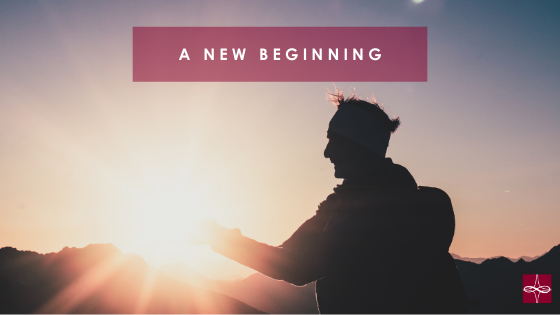

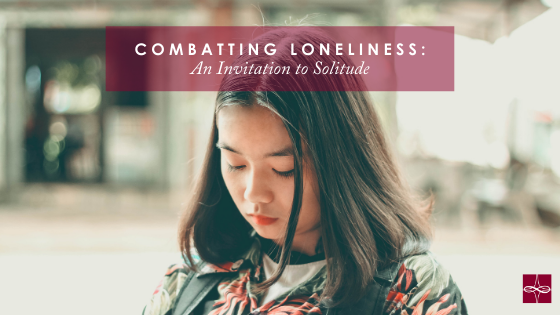

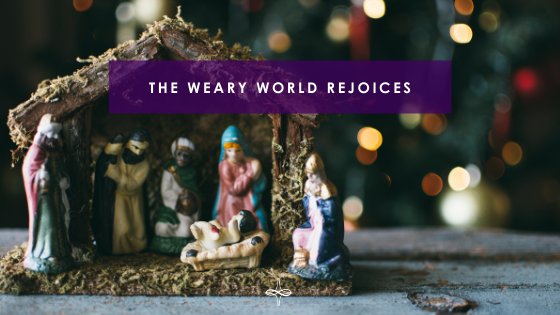

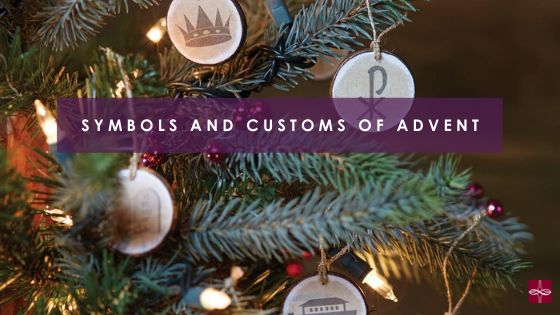
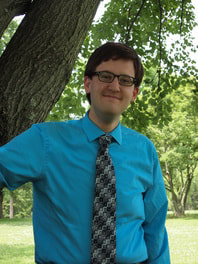
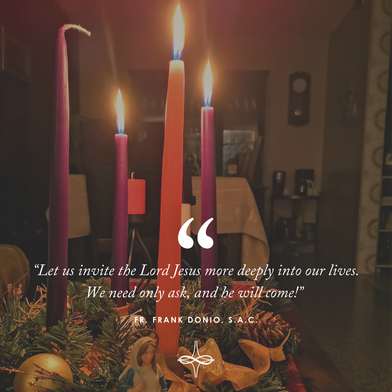
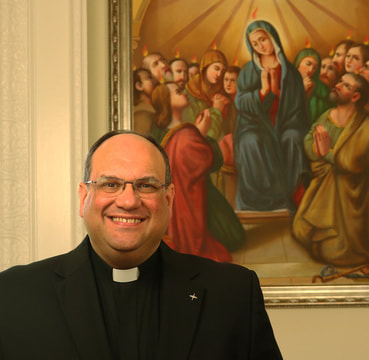
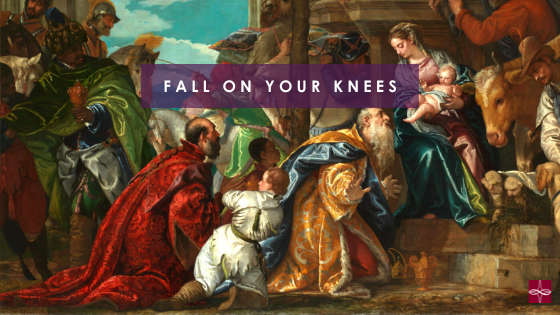

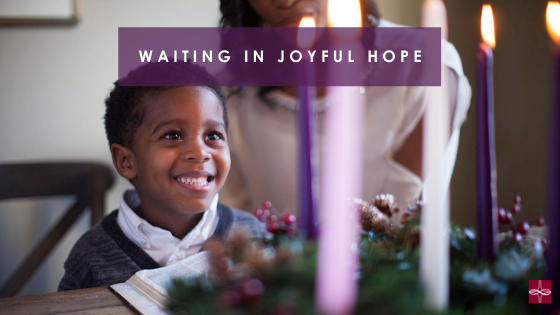
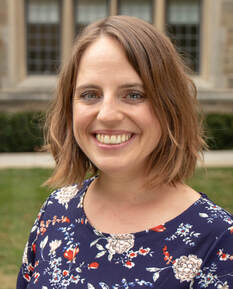
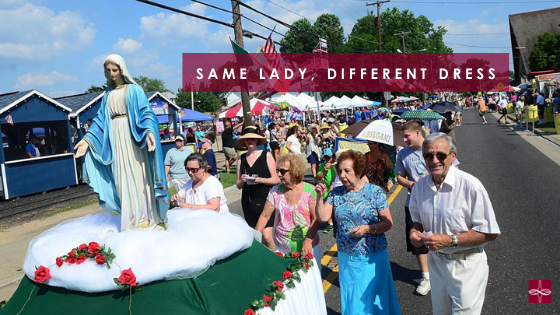
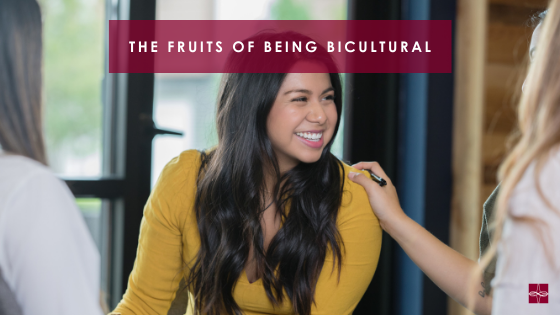

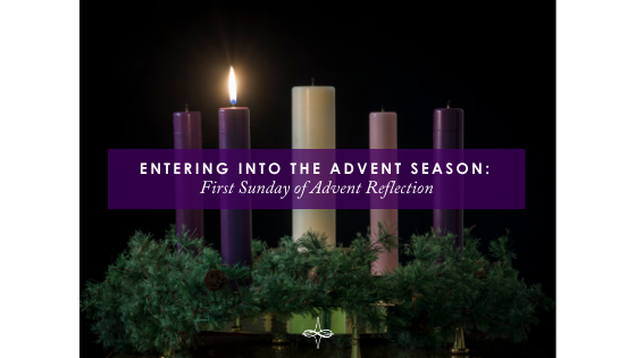
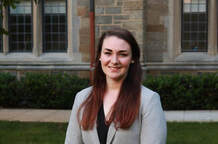
 RSS Feed
RSS Feed